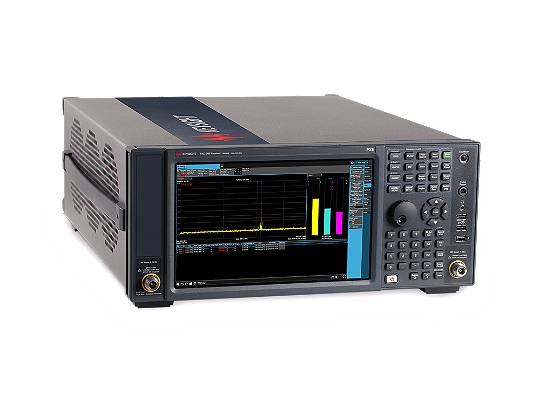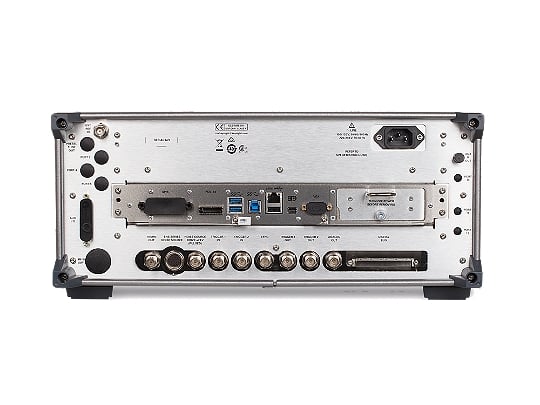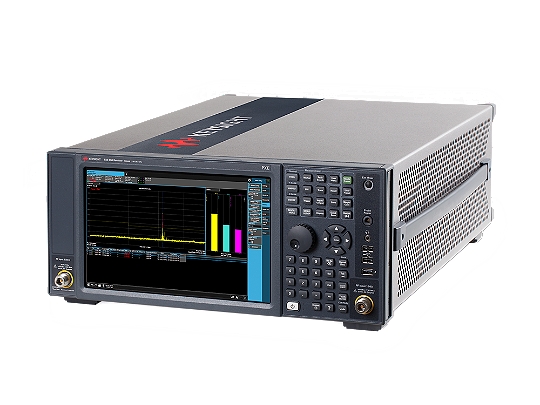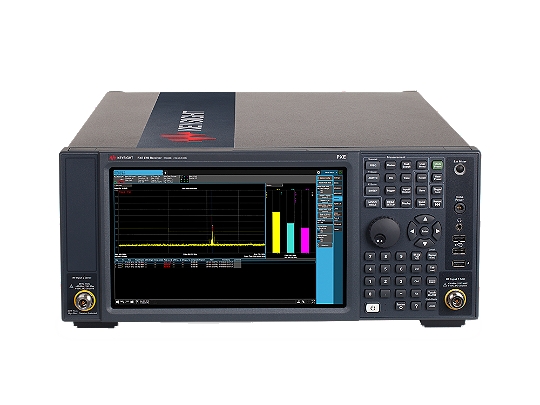도움이 필요하신가요 ?
Contact us with any question regarding your used Keysight equipment purchase!

Product selection and configuration assistance
Availabilty, warranty extensions, calibration plans, additional software options, education discounts etc.
Keysight N9048B-526
PXE EMI Receiver / 1 Hz to 26.5 GHz frequency range
정가 USD 177,935.00 50% 할인 USD 88,967.50 세금 미포함
다른 할인과 중복 사용 불가.
다른 할인과 중복 사용 불가.
- 4 x N2843 500MHz passive probes
- 1 x N2756A 16 channel MSO cable
- Software application bundle
- 1 Year Keysight Warranty
- Recent Calibration Certificate
Cannot ship to:
European Union
Switzerland
Norway
Turkey
Unit only ships within China.
Unit ships worldwide.
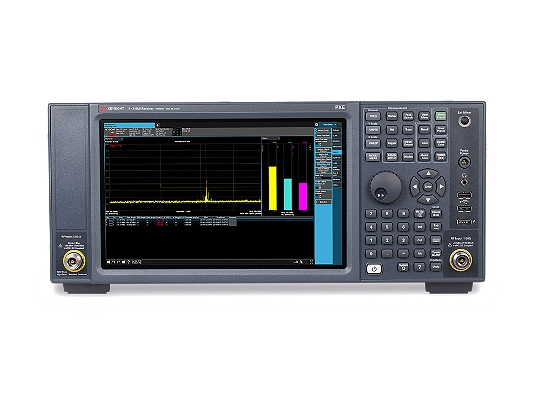
키사이트 프리미엄 중고
Keysight N9048B-526
From
USD 88,967.50 50% 할인
설치 옵션
| 526 | Frequency range, 1Hz to 26.5GHz |
| CNF | RF input Connector, Type-N, female |
| EXM | External Mixing |
| WF1 | Wideband digital IF |
추가 가능한 옵션
| 1DVR001A | ROM/CD-R/RW drive |
| 1MSE001A | Mouse |
| 1CN103A | Handle kit 177.0mm H (4U) - two front handles, 2015 color |
| 1CP105A | Rack mount flange and handle kit 177.0mm H (4U) - two brackets and front handles |
| 12M | |
| 1CM113A | Rack mount flange kit 177.0mm H (4U) - two flange brackets - New Phantom Gray Color |
| 1CR014A | Rack Slide Kit for 17-inch and 20-inch Mounting Holes |
| CV1117A | Cover, Front Panel, Phantom Gray for 4U X-Series Signal Analyzers |
| 24M | |
| 36M | |
| 60M | |
| B25 | Analysis bandwidth, 25 MHz |
| B40 | Analysis bandwidth, 40 MHz |
| C12 | |
| C36 | |
| C60 | |
| N90484CKB | Multi-channel click, requires N9048B-WF1 |
| CR3 | Connector rear, second IF output |
| N9048TDSB | Time domain scan |
| LNA | |
| E9068EM0E | |
| N9062EM0E | SCPI Language Compatibility Measurement Application |
| N9063EM0E | Analog Demodulation Measurement Application |
| P03 | Preamplifier, 3.6 GHz |
| P08 | Preamplifier, 8.4 GHz |
| P26 | Preamplifier, 26.5 GHz |
| P44 | Preamplifier, 44 GHz |
| PFR | Precision frequency reference |
| N90EMESCB | External Source Control |
| SF1 | Security Features, Exclude Launching Programs |
| SF2 | Security Features, Prohibit Saving Results |
| N90EMPSMB | Power Suite Measurement Application |
| N9048WT1B | Wideband time domain scan, basic detection |
| N9048WT2B | Wideband time domain scan, optimum detection |
| W10 | |
| WF1 | Wideband digital IF |
| YAS | Y-Axis Screen Video Output |

Request a customized version of this model by requesting a Custom Quote
제품 사양
Accelerate EMC Compliance Testing
Keysight's N9048B PXE is a standards-compliant EMI test receiver equipped with an RF pre-selector and LNA designs. Shorten your overall test time and easily perform gapless signal capture and analysis with real-time scan (RTS) capabilities.
- Frequency range of 1 Hz – 44 GHz
- Fully CISPR 16-1-1:2019, MIL-STD-461G, ANSI C63.2, and FCC compliant
- Industry leading sensitivity and dynamic range
- Time domain scan (TDS) significantly reduces overall test time
- Intuitive multi-touch user interface and PXE software
- X-Series upgradability to meet present and future test needs
액세서리
For Keysight Premium Used listings like-new accessories (e. g. a power cord) are included.
Other accessories that are not listed and included in the offer can be purchased separately at an extra cost with your purchase of a Keysight Used or Keysight Premium Used unit. Please specify in the comment field which additional accessories or support you are interested in.
For separate or post-purchase ordering, please contact your local Keysight office or Keysight Partner here. Or check our online store if available for your region here.
시작할 준비가 되셨나요 ?
유사 목록
본 모델
다른 제품
자주 묻는 질문
키사이트 새 제품, 키사이트 프리미엄 중고 및 키사이트 중고 장비 간의 주요 차이점은 무엇인가요?
| 키사이트 새 제품 | 키사이트 프리미엄 중고 | 키사이트 중고 | |
|---|---|---|---|
| 할인 | 해당없음 | 최대 70% | 최대 90% |
| 상태 | 새 제품 | 거의 새 제품 | 작동 상태 ¹ |
| 펌웨어 | 최신 | 업데이트됨 | 있는 그대로 |
| 교정 | 전체 | 전체 | 목록에 따라 |
| 액세서리 | 새 제품 | 새 제품 | 목록에 따라 |
| 보증기간 | 1~5년 ² | 거의 새 제품 | 90일 보증기간 |
| 맞춤 설정 | 가능 | 가능 | 제한있음 |
키사이트 프리미엄 중고에 대해 여기에서 자세히 알아보기
개인적인 요구에 맞춘 장비 설정(구성)이 가능할까요?
키사이트 프리미엄 중고 장비의 경우 일반적으로 사용자 맞춤 설정이 가능합니다. 대부분의 키사이트 프리미엄 중고 장비는 사용자가 필요로 하는 대로 제품을 설정(구성)할 수 있습니다. 업그레이드 옵션 및 응용 소프트웨어 역시 할인이 적용이 가능합니다.
키사이트 프리미엄 중고 장비를 사용자 맞춤 설정을 할 경우 해당 품목의 배송 및 납기가 변경될 수 있습니다.
일부 키사이트 중고 제품의 경우 사용자 맞춤 설정이 불가한 경우가 있습니다(제한 사항 포함). 제품 페이지의 연락 옵션을 사용하여 저희 이스토어 팀과 확인하실 수 있습니다.
Spectrum + Signal Analyzers Quick-Facts
What is a signal analyzer?
A signal analyzer is a device used to test and measure electronic signals. Types of signals can vary, including voltage, current, and radiofrequency. Signal analyzers vary in their capabilities and features, depending on the application. There are many types of signal analyzers, but the most common type is an oscilloscope. Other types include spectrum analyzers, network analyzers, and signal generators.
An oscilloscope is a device used when designing electronic systems that allows a signal to be viewed as a waveform. A spectrum analyzer measures the amplitude and frequency of signals over a specific period of time. A network analyzer analyzes circuits without having access to their design details; this can be helpful when there is a delay between creating a circuit and testing it. A signal generator generates signals which are then used by other devices.
There are many uses for a signal analyzer, depending on the type of device and features available. Some standard capabilities include:
Generating and analyzing signals
Magnifying and analyzing large signals
Displaying waveforms of varying types
Displaying the full frequency range of a signal, including visual representations of different frequencies and noise levels
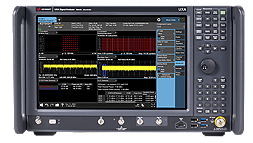
Vector Signal Analyzer vs Spectrum Analyzer – What's the difference?
A signal analyzer analyzes signals that have already been generated, whereas a spectrum analyzer is used to discover frequencies or actually generate frequencies itself.
A spectrum analyzer performs real-time spectrum analysis and measures instantaneous power or peak power, voltage, or current, depending on the type of signal being analyzed. It is also often used to monitor electromagnetic interference in circuits and devices.
On the other hand, a signal analyzer can only measure signals that are already present; it cannot be used to discover or analyze frequencies. Its purpose is to help the user identify electronic circuit problems and understand how the circuit is performing.
Signal Analyzer vs Oscilloscope – What's the difference?
The main difference between a signal analyzer and an oscilloscope is that a signal analyzer analyzes the voltage of a signal over a specific period of time. In contrast, an oscilloscope extracts the timing information of a signal.
An oscilloscope is a type of signal analyzer used to measure voltage signals over time. It has various features, including analog and digital functions, advanced triggering capabilities, and connectivity options. It is used to analyze signals from many different sources, such as time-domain signals, frequencies from radiofrequencies, or extremely low-frequency sources.
A signal analyzer is used to analyze signals that have already been generated. A signal analyzer is often used to monitor electromagnetic interference in circuits and devices, whereas an oscilloscope can only measure signals that are already present.
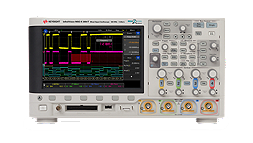
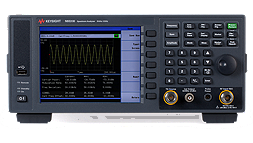
Figure. 2 Oscilloscope vs. Signal Analyzer
Read our oscilloscope basics guide to learn more about oscilloscopes and their uses. To see our full range of new and used oscilloscopes, visit our product listing page.
Signal Analyzer vs. Vector Network Analyzer – What's the difference?
A network analyzer is used to test the performance of wired or wireless networks by examining both transmitted and received signals. Unlike a signal analyzer, it performs advanced analysis of both transmitted and received signals. It is different from a signal analyzer because it performs a live, real-time, analysis of signals on the device under test. In contrast, a signal analyzer only analyzes data after the signal has been created.
A network analyzer can also perform analysis and detect problems that prevent a signal from reaching its destination. For example, it can detect issues with cabling, connectors, or faulty equipment. It can also help resolve RF spectrum and Wi-Fi issues, such as interference and signal loss.
A signal analyzer is used by engineers to identify problems in electronic circuits and to understand how a circuit is behaving; for example, monitoring electromagnetic interference between multiple signals or devices. This makes it useful for testing and debugging circuits that use radio signals or other powerful sources of potential interference.
How to measure antenna impedance with a signal analyzer?
An antenna's impedance refers to the way it responds to signals from specific frequencies. If you want to know what sort of wireless signal a device is sending, you should evaluate the antenna's impedance with a spectrum analyzer. The device would help you determine whether or not your antenna is being affected by noise, which can negatively impact performance.
To measure your antenna's impedance, you can attach a spectrum analyzer to the end of the coaxial cable connected to the back of your antenna. The device will then calculate the impedance being transmitted once it goes through your coaxial cable.

How to measure phase noise with a signal analyzer?
Phase noise is a type of signal that often disrupts or interferes with wireless communication. It is a problem for devices that operate in the wireless frequency spectrum. If phase noise is common across specific frequencies, it can drown out other signals.
There are many different types of phase noise, and each one can affect your wireless technology differently. A signal analyzer measures the phase noise across different frequencies. The device will help you to determine whether your intended wireless communication needs some sort of interference protection.
To measure your device's phase noise with a signal analyzer, you can attach the device to the input of your receiver. This will allow the signal analyzer to calculate how much phase noise is being sent through your wireless communication devices.
How to measure return loss with a signal analyzer?
The return loss is the measurement of how much signal is reflected or wasted at a particular point. It is a measurement of how much energy is being lost in transmission. You can measure return loss with a spectrum analyzer which may enable you to improve the power and efficiency of your wireless connection.
If the return loss is too high, it could indicate power-management issues within your system. A signal analyzer can help you determine whether the return loss is too high, and help you find any hardware issues needing to be resolved. The device can notify you when your power-management settings fall below requirements for successful wireless communication.
To test a device’s return loss with a signal analyzer, plug the spectrum analyzer into the end of a coaxial cable connected to your intended transmitter. The device will determine how much signal is lost after it goes through the cable and exits to reach its intended recipient.
For additional information about how to use your spectrum analyzer to measure return loss, view “Features Resources” for a technical overview of a basic spectrum analyzer as well as an example of how to measure the return loss of an antenna.





